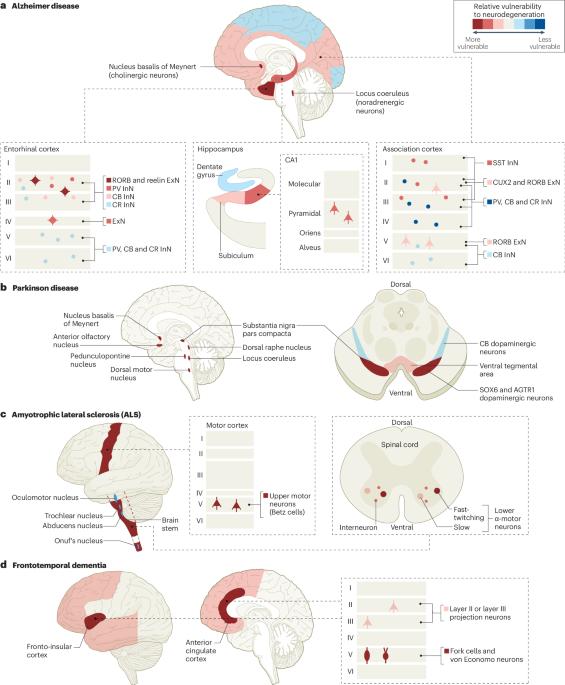Molecular and cellular mechanisms of selective vulnerability in neurodegenerative diseases
IF 28.7
1区 医学
Q1 NEUROSCIENCES
引用次数: 0
Abstract
The selective vulnerability of specific neuronal subtypes is a hallmark of neurodegenerative diseases. In this Review, I summarize our current understanding of the brain regions and cell types that are selectively vulnerable in different neurodegenerative diseases and describe the proposed underlying cell-autonomous and non-cell-autonomous mechanisms. I highlight how recent methodological innovations — including single-cell transcriptomics, CRISPR-based screens and human cell-based models of disease — are enabling new breakthroughs in our understanding of selective vulnerability. An understanding of the molecular mechanisms that determine selective vulnerability and resilience would shed light on the key processes that drive neurodegeneration and point to potential therapeutic strategies to protect vulnerable cell populations. Selective vulnerability of particular neuronal cell types is a characteristic of neurodegenerative diseases. Martin Kampmann explores our current understanding of the cellular and molecular mechanisms that lead to selective vulnerability in different diseases.

神经退行性疾病选择性易损性的分子和细胞机制
特定神经元亚型的选择性易损性是神经退行性疾病的一个特征。在这篇综述中,我总结了我们目前对不同神经退行性疾病中选择性脆弱的脑区和细胞类型的理解,并描述了所提出的细胞自主和非细胞自主机制。我重点介绍了最近的方法创新--包括单细胞转录组学、基于CRISPR的筛选和基于人类细胞的疾病模型--如何使我们对选择性易损性的理解取得新的突破。对决定选择性易损性和恢复力的分子机制的了解将揭示驱动神经退行性变的关键过程,并为保护易损细胞群指出潜在的治疗策略。
本文章由计算机程序翻译,如有差异,请以英文原文为准。
求助全文
约1分钟内获得全文
求助全文
来源期刊

Nature Reviews Neuroscience
NEUROSCIENCES-
自引率
0.60%
发文量
104
期刊介绍:
Nature Reviews Neuroscience is a multidisciplinary journal that covers various fields within neuroscience, aiming to offer a comprehensive understanding of the structure and function of the central nervous system. Advances in molecular, developmental, and cognitive neuroscience, facilitated by powerful experimental techniques and theoretical approaches, have made enduring neurobiological questions more accessible. Nature Reviews Neuroscience serves as a reliable and accessible resource, addressing the breadth and depth of modern neuroscience. It acts as an authoritative and engaging reference for scientists interested in all aspects of neuroscience.
 求助内容:
求助内容: 应助结果提醒方式:
应助结果提醒方式:


